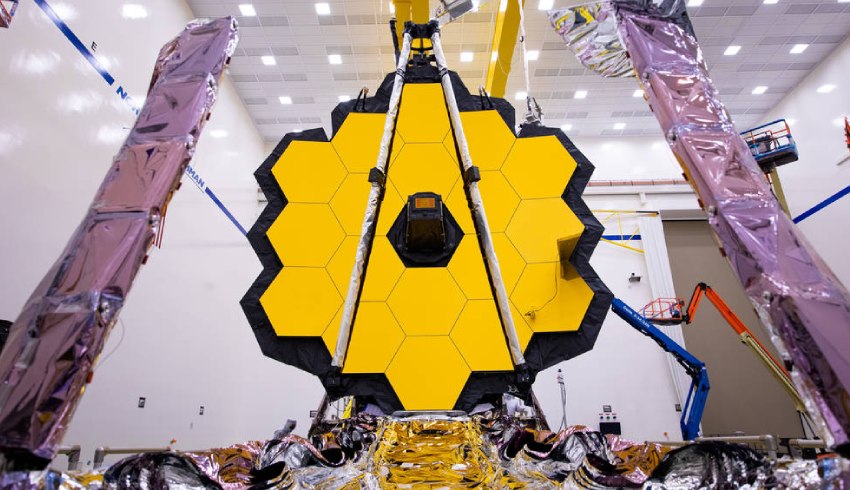The space agency has not revealed what the instrument’s cameras will show, but hinted it could reflect “the early universe, the evolution of galaxies through time” and “the lifecycle of stars”.
NASA has said it has a list of targets that have been pre-selected and prioritised by an international committee.
The telescope – known as the spiritual successor to Hubble – launched on Christmas Day in 2021 and is currently nearing the end of its six months of preparatory work including calibrating its instruments and aligning its mirrors.
Webb program scientist Eric Smith said, “The release of Webb’s first full-colour images will offer a unique moment for us all to stop and marvel at a view humanity has never seen before.
“These images will be the culmination of decades of dedication, talent, and dreams – but they will also be just the beginning.”
NASA admits it will be difficult to predict exactly how the first images will turn out, but Klaus Pontoppidan, one of its project scientists, promised it would deliver a “wow” moment for the public.
Last month, Space Connect reported how NASA released an early preparatory image that showed the observatory’s enhanced ability to capture the universe.
NASA compared Webbs’ glimpse of the large Magellanic Clouds (below) – using the Mid-Infrared Instrument (MIRI) – besides a picture of the same satellite galaxy in the Milky Way, taken by the agency’s Spitzer Space Telescope’s Infrared Array Camera.
Launched in 2003 and concluding operations in 2020, Spitzer was one of NASA’s “Great Observatories”, and was the first telescope to provide high-resolution images of the near and mid-infrared universe.

But with a significantly larger primary mirror, 6.5 metres approximately, and improved detectors, Webb’s cameras can capture the infrared sky with “improved clarity”, NASA said.
MIRI will see light in the mid-infrared region of the electromagnetic spectrum in space, with wavelengths longer than our own eyes can see, and provide new details of distant galaxies and newly forming stars.
“This is a really nice science example of what Webb will do for us in the coming years,” Chris Evans, the telescope’s project scientist at the European Space Agency said during a livestream.
“We’ve done a lot of studies of star and planet formation in our own galaxy, but here we’re looking at it in the Magellanic Clouds, so small external galaxies, where they’re chemically less evolved than our own Milky Way," Evans added.
“So, this gives us a chance to look at the processes of star and planet formation ... in a very different environment to our own galaxy.”
NASA said the image showed the emission from “polycyclic aromatic hydrocarbons”, or molecules of carbon and hydrogen that “play an important role in the thermal balance and chemistry of interstellar gas”.
Evans added that while Spitzer achieved “amazing things”, the observatory was primarily used for wide-field surveys.
He said that Webb will provide “an amazing view of the processes in a different galaxy for the first time, cutting through the dust ... We’re using the mid-infrared to look through the material that otherwise would be obscured at visible wavelengths”.
James Webb is a collaboration between NASA, the European Space Agency, the Canadian Space Agency and French launch provider Arianespace.
Its mission – dubbed VA256 – has been in the making for 14 years and it’s hoped Webb will be able to reveal what the universe looked like almost 14 billion years ago.

Adam Thorn
Adam is a journalist who has worked for more than 40 prestigious media brands in the UK and Australia. Since 2005, his varied career has included stints as a reporter, copy editor, feature writer and editor for publications as diverse as Fleet Street newspaper The Sunday Times, fashion bible Jones, media and marketing website Mumbrella as well as lifestyle magazines such as GQ, Woman’s Weekly, Men’s Health and Loaded. He joined Momentum Media in early 2020 and currently writes for Australian Aviation and World of Aviation.

